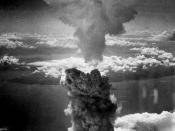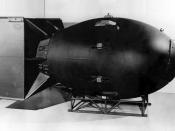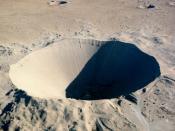In its attempts to harness the power of the atom, mankind
has itself in the possession of weapons with unbelievable,
destructive power. Nations now have the ability to destroy
entire cities from hundreds of miles away, in only minutes.
These weapons are nuclear weapons. Nuclear weapons cost the
citizens of the United States billions of dollars in taxes each
year, the testing and maintenance of these weapons pose serious
health risks, and the actual need for these weapons is not and
has not been around for years. For the above reasons, I feel
the United States should reduce its nuclear arsenal.
Nuclear weapons derive their power from the energy
released when a heavy nucleus is divided, called fission or when
light nuclei are forced together, called fusion. In fission, a
nucleus from a heavy element is bombarded with neutrons. The
nucleus breaks into two pieces, releasing energy and two or more
neutrons. Each of these neutrons has enough energy to split
another heavy nucleus, allowing the process to repeat itself.
This is the chain reaction that makes nuclear weapons possible.
In a fusion nuclear device such as a hydrogen bomb, lightweight
nuclei are forced to fuse at very high temperatures into heavier
nuclei, releasing energy and a neutron. In order to squeeze the
two nuclei together, an atomic fission bomb is usually used. A
fusion reaction releases about four times more energy per unit
mass than a fission reaction. The United States supervised the
development of the atomic bomb under the code name Manhattan
Project, during World War II. The first nuclear chain reaction
occurred in December 1942, at the University of Chicago. Soon
after the first bomb test, atomic bombs were dropped on the
Japanese cities of Hiroshima and Nagasaki in 1945. The first
hydrogen bomb was developed...


